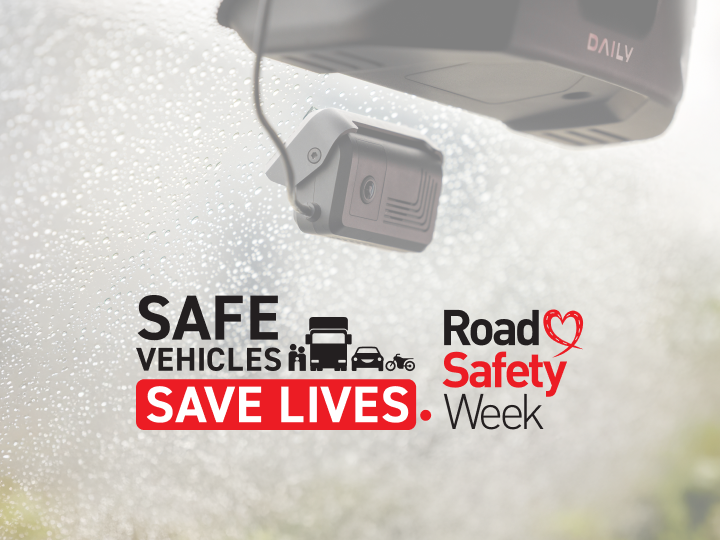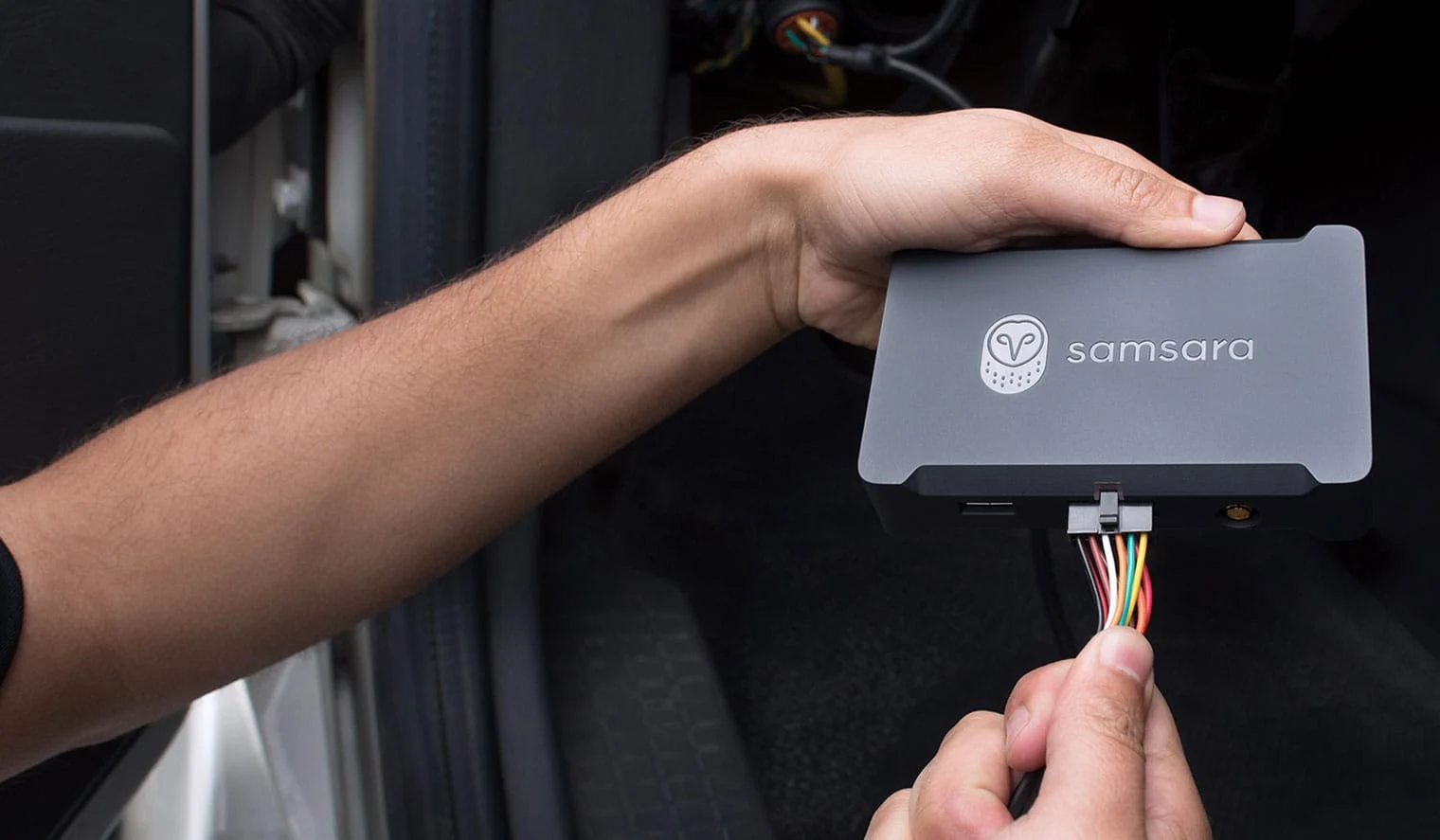Safety
“Safe vehicles save lives” as Road Safety Week highlights importance of digital technology
November 17, 2025
Vice President of Marketing, EMEA

Get the latest from Samsara
Subscribe nowSafe vehicles save lives. That’s the key message underpinning this year’s Road Safety Week (RSW) organised by UK charity Brake. And it’s one we at Samsara wholeheartedly endorse.
Those four words—safe vehicles save lives—are inspired by the Safe System, a globally recognised methodology that takes a holistic view of road safety, including everything from speed to road layouts and design.
This year, though, the focus is on the vehicles themselves and the impact technology makes on road safety. Until relatively recently, many safety features were based on physical solutions such as seatbelts, airbags, and improved braking systems.
But increasingly, vehicle safety is being shaped by digital systems such as sensors and cameras that use data to help prevent crashes from happening in the first place.
These innovations—an integral part of Samsara’s Connected Operations Platform—are helping to redefine road safety in fleets. Last year, for example, our technology helped customers prevent 250,000 accidents, an astonishing and life-affirming contribution to road safety. What’s more, digital safety systems tackle road safety in three key ways.
Visibility is crucial to safer roads
The first is visibility. If operators can’t see how their vehicles are being driven or how their drivers are behaving behind the wheel, they can’t take action to reduce risk. Samsara’s technology gives fleets a real-time view of driver behaviour—from speeding and harsh braking to seatbelt use and distraction—so managers know exactly where problems lie.
“We needed to look at our drivers: what they’re doing, how they’re driving, how safe they are on the roads, and the problems they’re incurring daily,” explained Paul Cerexhe, Director of Logistics, FM Conway. “We wanted to understand what was going on out there to ensure that our employees, and other road users, get home safe.”
By installing Samsara technology across the company’s 1,000-strong fleet, the firm has seen a 21.9% reduction in the number of road accidents.
“We didn’t know how good or bad drivers were before—we had to rely on feedback from incidents or the public,” said Cerexhe. “Now we can actually see that information in real time, which is a massive benefit for us. One of the best things that has come from the system is that you see drivers go from a poor to a good rating very quickly.”
Real-time accident prevention
If visibility shows operators where the risks are, real-time prevention is what stops those risks from turning into accidents. Samsara’s AI Dash Cams and in-cab alerts can detect behaviours such as phone use, tailgating, and fatigue, warning drivers ‘in the moment’ to prevent things from getting out of hand.
For fleets, real-time driver alerts are transformative. When Andrew Sharp, Transport Shift Manager, Delifresh was asked what his favourite feature was, he didn’t hesitate.
“It has to be the Drowsiness Detection Alert,” he said. “Thanks to the coaching with our drivers, it's become clear that many didn’t realise how tired they were. In one case, a driver was nodding off and the forward-facing camera picked up standing traffic ahead. Without the alert that woke him in time, he would have run into those vehicles.”
Shaping safer behaviour through coaching
While visibility and real-time prevention address immediate risks, Samsara’s platform makes it possible to turn driving data into longer-term constructive coaching, helping them understand not just what happened on the road, but why.
With clear performance trends and incident insights, managers can deliver targeted feedback that reinforces positive habits and corrects risky ones. Over time, this creates a culture where safety is embedded at every level of the organisation—from the newest driver to the most experienced operator.
For Matthew Reid, Head of Plant & Transport, Cappagh Browne, these long-term benefits started as soon as the installation was complete.
“There’s no waiting around,” said Reid. “As soon as the system registers a risky event, I’m notified for review. It’s seamless.”
He went on: “Now, we know where the vehicle is, who is driving it thanks to the AI, and how they’re driving it. If there’s an instance where a driver needs coaching, I can pull up the footage, speak to the driver, and hold them accountable.”
Safety becomes embedded across fleets
The results have been dramatic across multiple areas. Within just one year, Cappagh Browne achieved an 88% reduction in at-fault accidents, dropping from over 30 claims to just four. The company saw a 95% reduction in adverse driving behaviours, including mobile phone usage and distracted driving, while speeding incidents decreased by 17%. Overall safety scores improved by 68 points, rising from 8/100 to 76/100.
As part of that cultural shift, the operations team—like many other fleet operators—also launched competitions rewarding the top-performing drivers.
"Safe driving is the law, but if you can sweeten the deal with a little competition, then everyone will compete to be the best,” said Reid.
These examples show how visibility, real-time prevention, and coaching combine to create lasting change, not only cutting accidents but also embedding safety as part of everyday culture across fleets.
For me, that’s exactly what Road Safety Week is about. There are many facets to creating a safe system, of which safer vehicles are but one pillar. But if we can get that right—along with improvements to road design and greater awareness of speeding—then there’s every hope that we can reduce fatalities on our roads.
Samsara is a long-serving strategic partner to Brake. We are proud to support this year’s Road Safety Week to help dramatically improve safety through advanced AI-powered technology that is proven to prevent incidents and save lives.
Get the latest from Samsara
Subscribe now


















